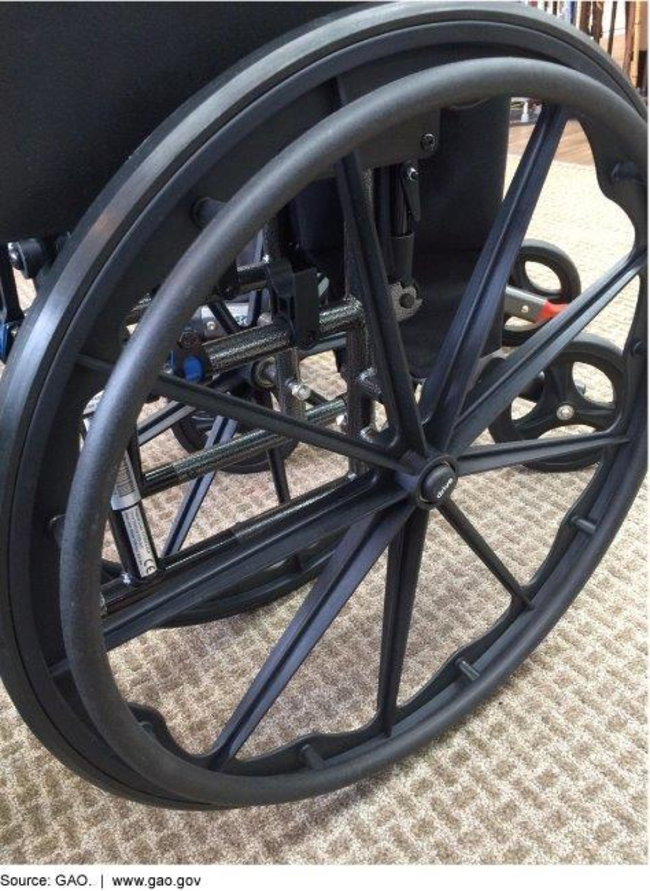Medicare Fee-For-Service: Information on the Second Year of Nationwide Reduced Payment Rates for Durable Medical Equipment
Fast Facts
Historically, Medicare used a standard set of rates to pay for certain durable medical equipment, like wheelchairs and oxygen, for its beneficiaries. Due to concerns that it was paying higher than market rates, in 2011 Medicare began a competitive bidding program for some of these items in designated areas. In 2016, information from this program was used to reduce rates in the rest of the country.
We previously reported that the number of suppliers of this type of equipment decreased in 2016, continuing a long-term trend. This update found that in 2017, that trend continued.
Medicare has been on our list of High Risk issues since 1990.

Photo of a wheelchair
Highlights
What GAO Found
The Centers for Medicare & Medicaid Services (CMS) implemented a competitive bidding program (CBP) in 2011 for certain durable medical equipment (DME), such as wheelchairs and oxygen, that is currently operating in 130 designated U.S. areas. Beginning on January 1, 2016, CMS began using information from the CBP to start adjusting Medicare fee-for-service payment rates for certain DME throughout the country in areas that had previously not been subject to the CBP (known as non-bid areas). For 2017, the second year adjusted rates were in effect in non-bid areas, GAO found:
- The number of suppliers furnishing rate-adjusted items in non-bid areas in 2017 decreased 11 percent compared to 2016. This followed an 8 percent decrease in 2016--the first year adjusted rates were in effect--compared to 2015 and continued a trend of annual decreases in non-bid areas that averaged 8 percent per year going back to at least 2011.
- The number of beneficiaries receiving at least one rate-adjusted item in non-bid areas in 2017 decreased 2 percent compared to 2016. This followed a decrease of less than half of 1 percent between 2015 and 2016.
Why GAO Did This Study
To achieve Medicare DME savings, CMS began implementing the CBP in 2011 in certain geographic areas. The Patient Protection and Affordable Care Act required CMS to use CBP information to adjust fee-for-service payment rates for certain DME items in non-bid areas. On January 1, 2016, adjusted rates went into effect in non-bid areas. CMS estimated these adjustments will save the Medicare program about $3.6 billion and beneficiaries about $1.2 billion between fiscal years 2016 and 2020.
GAO's July 2018 report (GAO-18-534) reviewed the effects of adjusted rates for DME in non-bid areas in 2016, the first year adjusted rates were in effect. This report is an update and examines changes in the number of suppliers furnishing and beneficiaries receiving DME items in 2017--the second year adjusted rates were in effect. GAO reviewed Medicare claims data from 2010 through 2017.
Recommendations
GAO is not making any recommendations.
